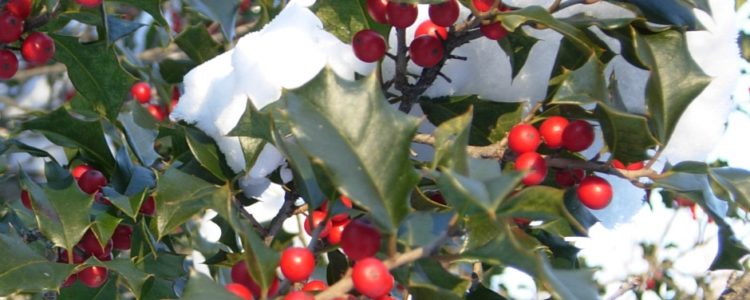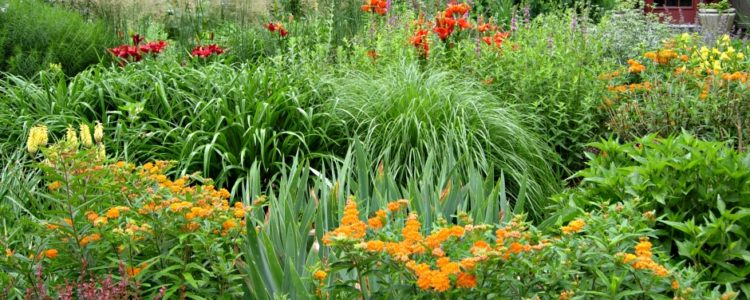American Holly, Ilex opaca, is a familiar broadleaf evergreen found throughout Bucks County. It is one of those native evergreens we have grown up with. Its glossy green leaves and bright red berries grace the winter landscape and are used to decorate homes and greeting cards for Christmas.
This tree type Holly is a slow grower to 40 or 50 feet with a 20 to 40 foot width. It likes moist, well-drained soils with plenty of organic matter and will grow in sun or partial shade. As I drive along River Road I spy Hollies that have self-seeded under taller trees and along unmown property edges. Like all Hollies, they are dioecious, having separate male and female plants. Only the female plants produce berries. One male in your neighborhood can pollinate several females. Self-pollinated American Hollies can have dull olive-green leaves. The cultivars ‘Jersey Princess’ and ‘Jersey Knight’ have been introduced through Rutgers University and have consistent dark green foliage. Other cultivars such as ‘Old Heavyberry’ also present abundant fruits. Over 1000 cultivars have been named including ‘Canary’ with yellow berries and ‘Steward’s Silver Crown’ with variegated leaves. All broad leaved evergreens, including Hollies, Rhododendrons and Cherry Laurels, should only be planted in the spring. A coating of an antidesiccant in late fall, such as Wilt-pruf, a wax based spray, will protect leaves from harsh wind and dehydration.
Probably like you, I always thought of American Holly as being synonymous with a cold and snowy location; that is until the year I moved to Seal Harbor, Maine. You see, American Holly, one of the hardiest evergreen Ilex species, is only hardy from the coast of Massachusetts to Florida, zones 5 through 9. And though, Seal Harbor is zone 5 at its location along the Atlantic coast, the extreme cold wind is not tolerated by evergreen Hollies. Grown instead are the native Winterberry shrubs, Ilex verticillata. Winterberry are deciduous native Hollies. They have small thin leaves that drop in the fall and bright red berries that cling to their branches throughout the winter. In Maine, they surround the banks of “ponds” and flourish in bogs and wetlands. Winterberries are a wonderful addition to the shrub border, setting off evergreens with their profuse sprays of red berries. ‘Red Sprite’, a dwarf Ilex verticillata cultivar, only grows 3 feet tall. Be sure to include the correct pollinator, ‘Jim Dandy’ for the best berry set. The majority of Winterberries grow 6 to 12 foot tall and include Ilex verticillata ‘Winter Red’, ‘Afterglow’ and ‘Cacapon’. Be sure to use a pollinator that flowers the same time as the females for good fruit set.
Returning to Pennsylvania to begin a landscape business brought a whole new joy of designing and gardening with Hollies. Living without evergreen hollies instilled a love for these plants that makes me glad whenever I see them. There are many non-native species and hybrids of evergreen Hollies we can use in gardens ranging from shrub to tree types. Still the native American Holly deserves its place.

